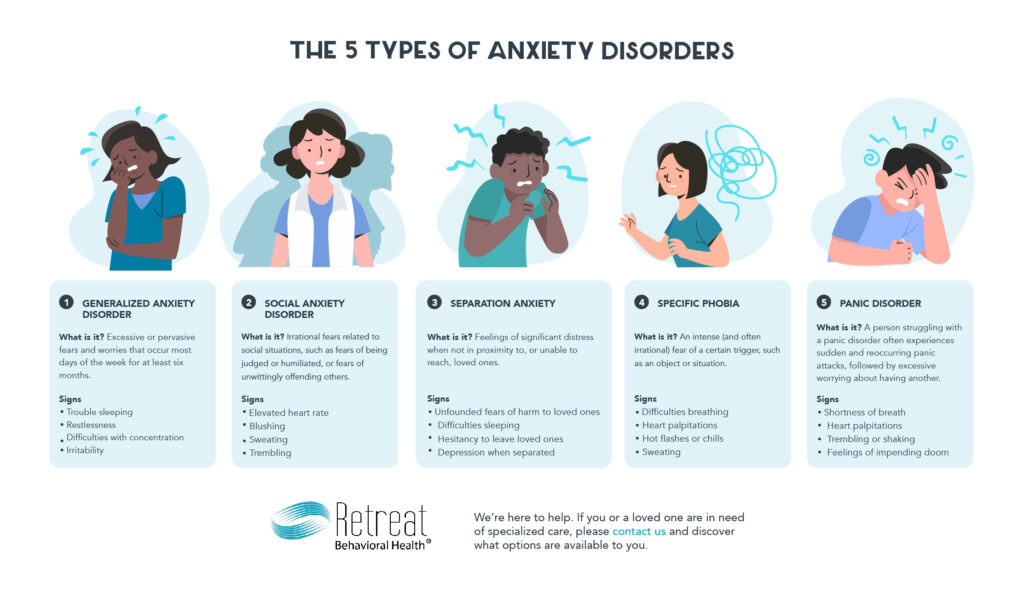Contents
Introduction

Eclectic Therapy: Techniques, Applications, and Effectiveness
Eclectic Therapy is an approach to psychotherapy that integrates techniques and principles from various therapeutic modalities. Unlike a single theoretical framework, Eclectic Therapy is flexible and adaptable, allowing therapists to tailor their methods to the unique needs of each client. By selecting specific interventions from multiple approaches, therapists can effectively address a wide range of psychological, emotional, and relational challenges.
This article thoroughly examines Eclectic Therapy, covering its core principles, essential techniques, and use in treating different psychological conditions. It also addresses the approach’s criticisms and evaluates its impact on mental health and personal development.
What is Eclectic Therapy?
Eclectic Therapy is a dynamic and adaptive approach that draws from different psychological theories and techniques to meet the specific needs of a client. Its primary goal is to provide flexible and effective treatment by integrating methods from several therapeutic modalities, such as Cognitive Behavioral Therapy (CBT), Psychodynamic Therapy, Humanistic Therapy, and Solution-Focused Therapy. This adaptability allows therapists to create a customized treatment plan that addresses the client’s unique problems, preferences, and personality.
Eclectic Therapy was influenced by the works of notable figures like Arnold Lazarus, who developed Multimodal Therapy, and Paul Wachtel, known for Integrative Psychotherapy. It differs from Integrative Therapy in that it may involve a more spontaneous and situational selection of techniques rather than a structured integration of multiple modalities.
Why is Eclectic Therapy Important?
Eclectic Therapy is significant because it allows therapists to use a wide array of therapeutic techniques and interventions. Instead of sticking to one specific model, Eclectic Therapy acknowledges the complexity of human experiences and recognizes that different problems may require different therapeutic strategies. This flexibility makes it particularly effective for treating a variety of issues such as anxiety, depression, trauma, and relational conflicts.
The personalized nature of Eclectic Therapy ensures that clients receive care that aligns with their individual needs, cultural backgrounds, and preferences. This approach can increase engagement and therapeutic alliance, leading to more effective treatment outcomes.
Understanding How Eclectic Therapy Works
Eclectic Therapy operates on the principle that no single therapeutic model is universally effective for all clients or problems. Instead, it combines different approaches to provide a well-rounded and flexible treatment. This adaptability is based on ongoing assessment, client feedback, and therapeutic progress, allowing the therapist to modify interventions as needed.
In the subsequent sections, we will cover the essential principles of Eclectic Therapy, discuss its critical concepts, and assess its overall effectiveness in managing psychological and relational issues.
Simple Overview
Core Idea Eclectic Therapy integrates multiple therapeutic techniques and approaches, providing a flexible framework that can be adapted to address different psychological and emotional challenges. By customizing the therapy to fit the client’s unique needs, it promotes effective change and supports a more personalized and meaningful therapeutic experience. This approach ensures that interventions are dynamically adjusted to the client’s progress and changing circumstances.
Real-Life Example: Consider a client struggling with anxiety and depression. An eclectic therapist might use Cognitive Behavioral Therapy (CBT) techniques to help the client manage anxious thoughts, alongside Psychodynamic Therapy to explore underlying conflicts that contribute to depressive symptoms. This combined approach allows for both immediate relief and long-term understanding, creating a holistic solution tailored to the client’s situation.
Critical Concepts
- Flexible Approach: Eclectic Therapy does not commit to a single therapeutic model but instead selects techniques based on the client’s specific issues, goals, and preferences. This flexibility allows therapists to adapt their approach as needed to better meet the client’s evolving needs, providing a more tailored and responsive treatment experience.
- Client-Centered Adaptation: The therapy is customized to the client, ensuring that the techniques used are relevant and effective. This client-centered adaptation enhances engagement, therapeutic alliance, and outcomes by aligning the therapy with the client’s personal experiences and values, thus promoting a deeper and more individualized therapeutic connection.
- Therapeutic Versatility: The ability to draw from multiple therapeutic models allows for greater versatility. Eclectic Therapy can effectively address a wide range of psychological issues and is suitable for individual, couple, family, and group therapy contexts, making it adaptable to diverse therapeutic settings and client needs.
Relationship Between Eclectic Therapy & Multimodal Therapy
Eclectic Therapy and Multimodal Therapy, developed by Arnold Lazarus, both emphasize flexibility and the integration of various techniques. Multimodal Therapy involves a systematic and structured assessment of multiple modalities, such as behavior, affect, sensation, imagery, cognition, interpersonal relationships, and drugs/biology (BASIC I.D.). This structured approach ensures that all dimensions of a client’s experience are considered comprehensively.
In contrast, Eclectic Therapy may involve a more spontaneous selection of techniques based on the client’s immediate needs and the therapist’s expertise. While Eclectic Therapy is highly flexible, allowing for adaptive use of various methods, it may not follow a specific, organized framework like Multimodal Therapy.
An eclectic therapist might incorporate elements of Multimodal Therapy by systematically assessing different aspects of a client’s experience and then selecting the most appropriate interventions. This blended approach leverages the structured assessment of Multimodal Therapy while maintaining the flexibility of Eclectic Therapy.
Comparison of Eclectic Therapy and Integrative Therapy
| Aspect | Eclectic Therapy | Integrative Therapy |
| Definition | Utilizes techniques from various therapeutic approaches based on the client’s needs and preferences. | Combines elements from different therapeutic models to create a coherent, customized approach for each client. |
| Main Focus | Flexibility in selecting techniques and interventions from a range of therapies. | Systematic integration of theories and methods to create a unified therapeutic framework. |
| Therapeutic Approach | Adapts methods from different therapies without necessarily aligning them into a single theoretical framework. | Integrates methods and theories into a cohesive model that addresses client needs more holistically. |
| Theoretical Foundation | Does not adhere strictly to one theoretical framework; rather, it selects tools and techniques based on effectiveness. | Draws from multiple theories, integrating their concepts to form a structured approach. |
| Techniques Used | Uses techniques from various approaches (e.g., cognitive-behavioral, psychodynamic, humanistic). | Uses techniques from various approaches (e.g., cognitive-behavioral, psychodynamic, humanistic). |
| Flexibility | Highly flexible; the therapist may switch techniques based on what seems most effective at the moment. | Flexible but within a structured framework; integrates methods in a planned and systematic manner. |
| Therapist’s Role | Selects and applies different techniques as needed, often adapting in real-time. | Synthesizes different theoretical approaches into a coherent strategy tailored to the client’s needs. |
Notable Figures in Eclectic Therapy
Arnold Lazarus: Pioneered Multimodal Therapy, a comprehensive form of Eclectic Therapy that draws from multiple therapeutic techniques, such as cognitive behavioral, and psychodynamic approaches. His focus was on customizing treatment based on seven different modalities to meet each client’s specific psychological needs.
Gerald Corey: An advocate of the eclectic approach in counseling and psychotherapy, Corey combined existential, cognitive-behavioral, and humanistic techniques. He emphasized the importance of integrating different therapeutic models to address diverse client concerns, allowing for flexibility in treatment.
Stanley Rosner: A strong proponent of eclecticism in therapy, Rosner highlighted the necessity of adapting therapeutic approaches to the specific issues each client presents. He combined elements from various models, such as psychodynamic and cognitive-behavioral techniques, to ensure more effective treatment outcomes.
Image Source: behavenet.com

Theories Influenced by Eclectic Therapy
- Schema Therapy: Integrates cognitive-behavioral, attachment, psychodynamic, and gestalt approaches to address chronic mental health issues and personality disorders, focusing on changing deep-seated patterns or schemas.
- Mindfulness-Based Cognitive Therapy (MBCT): Combines cognitive-behavioral techniques with mindfulness practices to prevent relapse in depression, promoting awareness and acceptance of thoughts.
- Rational Emotive Behavior Therapy (REBT): Although primarily cognitive-behavioral, it incorporates elements from other approaches, such as mindfulness, to enhance emotional regulation and challenge irrational beliefs.
- Narrative Therapy: Combines systemic, cognitive, and existential approaches to help clients reframe their stories and view their experiences in empowering ways, focusing on separating the person from the problem.
- Gestalt Therapy: Often uses an eclectic range of experiential and dynamic methods to foster client awareness and emotional expression, emphasizing the here-and-now experience and self-awareness.
Applications of Eclectic Therapy in Treating Mental Health Disorders

Depression
Eclectic Therapy may combine CBT techniques for cognitive restructuring with humanistic approaches to address self-worth and existential concerns. This comprehensive approach can provide immediate symptom relief and long-term insight.
Example: A client dealing with depression might engage in cognitive restructuring to challenge negative thoughts while using expressive writing exercises to explore feelings of loss and meaning.
Image Source: healthline.com

Anxiety Disorders
By integrating exposure therapy with relaxation and mindfulness techniques, Eclectic Therapy can help clients manage anxiety symptoms effectively.
Example: A client with social anxiety may be guided through exposure exercises while also learning mindfulness-based techniques to stay present and manage physical symptoms of anxiety.
Image Source: synergyhealthprograms.com

Relationship Issues
Eclectic Therapy approaches relationship issues by drawing from various therapeutic techniques to address interpersonal dynamics. This may include communication skills training, conflict resolution strategies, and emotional support tailored to the unique needs of the couple or individual.
Example: A couple experiencing conflict might use emotion-focused interventions to explore unmet needs, cognitive-behavioral techniques to improve communication, and systemic approaches to identify relational patterns.
Image Source: hitchincounselling.co.uk/
Common Myths About Eclectic Therapy
| Myth | Reality |
| Eclectic Therapy is Unscientific and Arbitrary | Eclectic Therapy uses evidence-based interventions from multiple modalities, carefully selecting techniques based on the client’s needs and research. |
| Eclectic Therapy is Just a ‘Jack of All Trades, Master of None’ | Eclectic Therapy requires therapists to have a deep understanding of multiple therapeutic models, applying them effectively rather than superficially. |
| Eclectic Therapy is the Same as Integrative Therapy | Eclectic Therapy is more flexible and situational, while Integrative Therapy combines approaches in a more systematic and coherent way. |
| Eclectic Therapy Lacks Consistency and Continuity | Skilled therapists maintain a consistent therapeutic alliance, ensuring continuity even when using diverse techniques. |
| Any Therapist Can Practice Eclectic Therapy Without Proper Training | Effective Eclectic Therapy requires extensive training in multiple modalities and skilled clinical judgment for combining techniques appropriately. |
Criticisms of Eclectic Therapy
- Lack of Theoretical Coherence: Eclectic Therapy has been criticized for not having a clear theoretical framework. Unlike more structured approaches, such as Cognitive Behavioral Therapy (CBT) or Psychodynamic Therapy, Eclectic Therapy lacks a singular guiding theory, which can lead to confusion about the underlying principles guiding treatment. This lack of coherence can sometimes result in inconsistent application of techniques.
- Dependence on Therapist’s Skill and Experience: The effectiveness of Eclectic Therapy heavily relies on the therapist’s skill, knowledge, and experience. An inexperienced or poorly trained therapist may misuse or inappropriately combine techniques, potentially causing harm or providing ineffective treatment. Critics argue that without sufficient training, therapists may apply eclectic techniques in a fragmented or contradictory manner.
- Risk of Overgeneralization: There is a risk that therapists using an eclectic approach may overgeneralize interventions, applying them without sufficient specificity or precision. Critics suggest that a lack of a structured framework could lead to vague or unfocused therapy sessions, reducing overall treatment efficacy.
Conclusion
Eclectic Therapy offers a flexible and adaptive approach to psychotherapy by combining techniques from various therapeutic modalities to meet individual client needs. This approach allows for personalized and effective treatment of diverse psychological and relational challenges, enhancing therapeutic outcomes. However, its success heavily depends on the therapist’s expertise in selecting and integrating appropriate interventions. While it provides versatility and practicality, Eclectic Therapy faces criticism for its potential lack of theoretical coherence and reliance on the therapist’s skill. Nonetheless, when practiced well, it can offer a comprehensive and responsive framework for fostering mental health and personal growth.
References
- Beutler, L. E., & Harwood, T. M. (2000). Prescriptive Psychotherapy: A Practical Guide to Systematic Treatment Selection. New York: Oxford University Press.
- Lazarus, A. A. (1993). Multimodal Therapy: A Technical Eclectic Approach. New York: Springer Publishing Company.
- Norcross, J. C., & Goldfried, M. R. (2005). Handbook of Psychotherapy Integration. Oxford: Oxford University Press.
- Cuijpers, P., Karyotaki, E., Weitz, E., Andersson, G., Hollon, S. D., van Straten, A., & Ebert, D. D. (2018). “The Effects of Psychotherapy for Adult Depression Are Overestimated: A Meta-analysis of Study Quality.” World Psychiatry, 17(2), 270-281.
- Wachtel, P. L. (1997). Psychoanalysis, Behavior Therapy, and the Relational World. Washington, DC: American Psychological Association.
- Greenberg, L. S. (2012). Emotion-Focused Therapy: Coaching Clients to Work Through Their Feelings. Washington, DC: American Psychological Association.
- Lazarus, A. A. (1989). The Practice of Multimodal Therapy: Systematic, Comprehensive, and Effective Psychotherapy. Johns Hopkins University Press.
- Wolpe, J., & Lazarus, A. A. (1966). “Behavior Therapy Techniques: A Guide to the Treatment of Neuroses.” Oxford, England: Pergamon Press.
- Arkowitz, H., Castonguay, L. G., & Holt, R. R. (1995). “Integration, Eclecticism, and Beyond.” In Norcross, J. C., & Goldfried, M. R. (Eds.), Handbook of Psychotherapy Integration (pp. 307-324). Oxford University Press.
- Thoma, N., Pilecki, B., & McKay, D. (2015). Cognitive Behavioral Therapy for Anxiety Disorders: A Practice-Based Evidence Approach. Routledge.
Explore more Theories & Therapies








